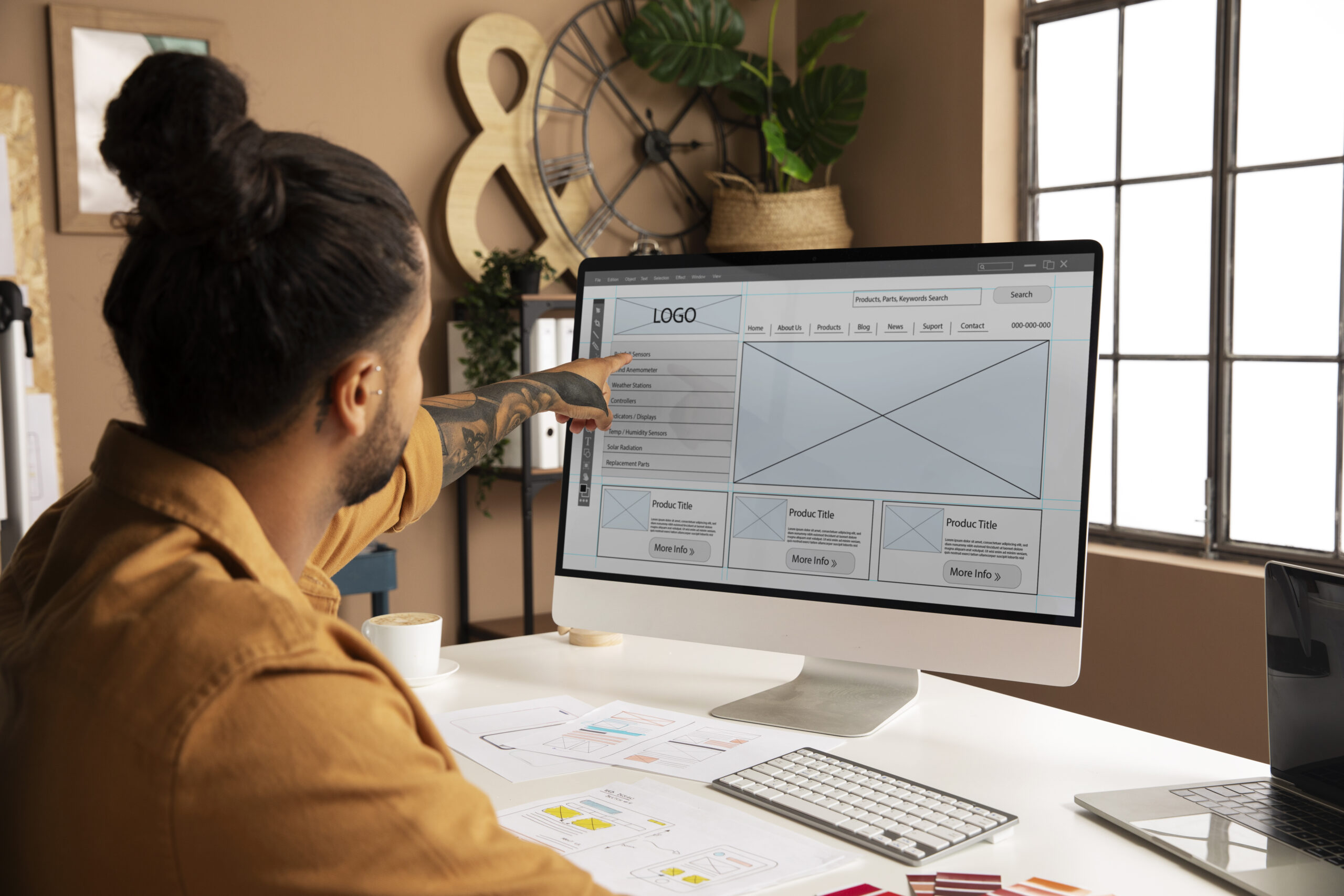
By Ann Jackson September 12, 2025
Creating a professional website used to be something only developers and designers could achieve. Learning programming languages, managing hosting, and writing complex code made the process difficult for beginners and expensive for small businesses. Thankfully, modern technology has simplified this process. Today, anyone can build websites online with the help of a website builder. These platforms allow you to create fully functional, visually appealing websites without writing a single line of code. All you need is a vision for your brand and some time to bring it to life using simple drag-and-drop features.
The appeal of a free website builder lies in accessibility. Whether you are launching a small business, starting a blog, or showcasing a portfolio, these tools eliminate the barriers of cost and complexity. A web builder tool handles all the technical work in the background, so you can focus on design and content. This step-by-step guide will walk you through the process of using drag-and-drop builders, from choosing the right platform to launching and maintaining your site. By the end, you will understand how easy it is to create an online presence that looks professional, functions smoothly, and reflects your unique identity.
Choosing the Right Website Builder
The first step in your journey is selecting a website builder that fits your needs. There are many platforms to choose from, each offering different features, templates, and pricing models. For those on a budget, a free website builder provides essential tools to get started. These versions often include customizable templates, drag-and-drop editors, and basic hosting services. For businesses that require advanced features like e-commerce or analytics, paid upgrades can unlock additional functionality.
When choosing a web builder tool, consider your goals. Do you want a simple personal blog, a professional portfolio, or a full e-commerce store? Matching your vision with the strengths of the platform ensures you avoid unnecessary complications later. Ease of use is also crucial. A platform should offer an intuitive interface, allowing you to build websites online quickly without frustration. By taking the time to compare options, you lay the foundation for a smoother building experience that aligns with your long-term goals.
Picking a Template That Matches Your Brand
Once you select your platform, the next step is choosing a template. Templates are predesigned layouts that serve as the foundation for your site’s structure and style. A website builder typically offers a wide range of templates, organized by industry or purpose. For example, a photography business might select a design that emphasizes large image galleries, while a consultant might choose a clean, professional template with space for text and testimonials.
A free website builder allows you to experiment with different templates until you find one that resonates with your brand identity. Even though these templates are predesigned, they are fully customizable. With the drag-and-drop interface of a web builder tool, you can change fonts, colors, and layouts to match your vision. This ensures that even if many people use the same base design, your final product feels unique. Choosing a strong template is an important step because it sets the tone for the rest of the customization process and ensures consistency across your website.
Customizing With Drag-and-Drop Features
The core advantage of drag-and-drop platforms is customization without coding. Using a website builder, you can simply click and drag elements such as images, text boxes, buttons, or forms into place. This allows you to build websites online visually, seeing the design come to life in real time. The process is intuitive and gives you complete control over how each page looks and feels.
A free website builder may include fewer advanced features, but it still provides everything you need to create a functional, attractive site. You can upload your logo, adjust navigation menus, and even integrate multimedia like videos or slideshows. The flexibility of a web builder tool ensures that your site doesn’t look generic. Instead, you can refine every detail, from the background colors to the placement of call-to-action buttons, until it represents your brand perfectly. Customization is where your vision transforms from concept to reality, and drag-and-drop builders make this process simple enough for anyone to achieve.

Adding Essential Content
A visually pleasing design is only part of the equation. Your website needs meaningful content to engage visitors and communicate your brand message. This includes text, images, videos, and interactive elements that provide value and clarity. A website builder makes it easy to add these elements, ensuring they are well-structured and professionally displayed.
As you build websites online, consider the journey your visitors will take. They should be able to easily navigate your homepage, learn about your services, and find contact information without confusion. A free website builder often provides content blocks designed for specific purposes, such as about sections, service listings, or product showcases. A web builder tool ensures consistency across pages, so fonts, spacing, and design remain uniform. High-quality content reinforces trust, while poor or incomplete content may drive visitors away. Adding the right mix of information and visuals ensures your site not only looks good but also fulfills its purpose effectively.
Integrating Features and Tools
Modern websites often require more than static content. They need interactive features that enhance functionality and engagement. A website builder allows you to integrate tools such as contact forms, chat widgets, appointment schedulers, or e-commerce carts with ease. These elements are usually available as drag-and-drop add-ons, making them accessible even to beginners.
A free website builder may limit some integrations, but many still include essentials like social media links, galleries, or basic forms. For more complex needs, premium upgrades provide access to advanced plugins and third-party connections. A web builder tool that supports these features allows you to adapt your site to meet evolving demands, whether that’s enabling online sales or building a mailing list. By adding the right tools, you make your website more useful for both you and your visitors, turning it from a static presence into an interactive hub for your brand.
Optimizing for Mobile and SEO
In today’s digital environment, websites must work seamlessly across all devices. Fortunately, most website builder platforms automatically optimize designs for mobile users. This means your layout will adapt to different screen sizes, ensuring that visitors on phones and tablets enjoy the same experience as those on desktops. Mobile optimization is no longer optional—it is a necessity for engaging modern audiences.
Search engine optimization (SEO) is equally critical. A free website builder often includes basic SEO features like editable page titles, meta descriptions, and customizable URLs. More advanced web builder tools may provide built-in analytics, keyword suggestions, or automated SEO audits. As you build websites online, focusing on SEO ensures your site is discoverable by search engines, bringing organic traffic to your brand. By combining mobile readiness with SEO strategies, you maximize the reach and impact of your website, ensuring it performs well for both users and search engines alike.

Previewing and Testing Your Website
Before launching, it’s important to preview and test your site. A website builder typically offers preview modes that let you see how your pages look on different devices. This helps identify any issues with layout, spacing, or readability. By taking the time to test your site, you ensure a smooth experience for your visitors from the moment you go live.
Even a free website builder provides tools for testing functionality, such as checking links, forms, and navigation menus. A web builder tool may also include analytics integrations that allow you to monitor performance after launch. Testing ensures that your website not only looks good but also works as intended. Catching errors before publishing saves you from potential embarrassment and lost credibility. Thorough testing gives you the confidence to share your site with the world, knowing it is polished and ready for visitors.
Publishing and Promoting Your Website
Once you are satisfied with your site, publishing is the final step. With a website builder, this process is as simple as clicking a publish button. Platforms usually include hosting, and even a free website builder will provide a subdomain to get you started. For a more professional look, purchasing a custom domain is highly recommended, as it strengthens your brand identity and makes your site easier to remember.
Promotion is just as important as launching. To build websites online effectively, you must drive traffic through social media, email campaigns, or search engine marketing. A web builder tool often includes built-in sharing options and integrations with social platforms, making promotion easier. Encouraging satisfied customers or followers to share your site can also expand its reach. Publishing marks the beginning of your online journey, and consistent promotion ensures your website grows into a valuable asset for your brand.

Long-Term Maintenance and Updates
Creating a website is not a one-time project but an ongoing process. Regular updates keep your site relevant, secure, and engaging for visitors. A website builder makes it easy to log in and update content, swap images, or adjust layouts as your brand evolves. This flexibility allows you to adapt without starting over or hiring technical help.
Even a free website builder supports ongoing updates, though premium versions may provide enhanced features like advanced security or automated backups. A web builder tool ensures that maintaining your site is as easy as building it, allowing you to focus on growth and customer engagement. By consistently updating your site, you show visitors that your brand is active and reliable. Maintenance is the key to long-term success, keeping your site fresh, functional, and aligned with your business goals.
Conclusion
Building a website no longer requires coding knowledge or expensive development services. With the help of a website builder, anyone can create a professional site using simple drag-and-drop features. A free website builder provides everything you need to get started, while premium upgrades unlock additional tools for growth. By following a step-by-step process—choosing the right platform, picking a template, customizing, adding content, integrating features, optimizing, testing, and publishing—you can build websites online quickly and effectively.
A web builder tool simplifies every stage, making the process accessible to beginners and efficient for professionals. Launching your site is only the beginning, as long-term success depends on consistent updates, promotion, and optimization. With the right mindset and tools, your website becomes more than just a digital space—it becomes the foundation of your brand’s online presence. Drag-and-drop builders empower anyone to turn their vision into reality, ensuring that creating a website is within everyone’s reach.